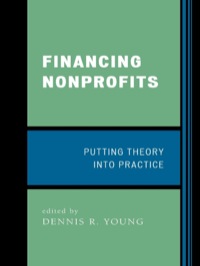Answered step by step
Verified Expert Solution
Question
1 Approved Answer
Although there is some truth in the following statements, which best describes accepting risk as part of a decision-making process, given the definition of risk
- Although there is some truth in the following statements, which best describes accepting risk as part of a decision-making process, given the definition of risk we have used in this class?
- Taking a course of action when you are not sure about what will happen in the future.
- Taking a course of action even though you know that only bad things could possibly happen.
- Taking a course of action when you are uncertain about the future, but only good outcomes can occur.
- Taking a course of action when you are uncertain about the future, and there are some outcomes in which bad things can occur as well as some good things.
- Taking a course of action when you are uncertain about the future, there is a possibility of loss, and the expected return is zero.
- The concept of risk management is best described by which of the following statements?
- Take a course of action that contains risk, even though there are some bad things that can happen.
- Eliminate as much risk as possible before taking a course of action.
- Identify and measure the risk before taking a course of action.
- Identify and measure the risk so that all the risk can be eliminated before taking a course of action.
- Identify and measure the risk, try to mitigate or avoid the worst outcomes, and then determine if the expected benefits outweigh the potential losses enough to justify a course of action.
- A probability distribution with fat tails means that there are more occurrences with very large values and very small values compared to a Normal distribution.
- True
- False
- A probability distribution which is more peaked at the center of the distribution than a Normal distribution means that
- the values near the mean are larger than the values in a Normal distribution.
- there are more values near the mean than in a Normal distribution.
- To show a typical bell-shaped distribution in Excel,
- sort the data and plot in a scatter diagram.
- sort the data and plot in a histogram.
- plot the data as they occurred, with the values on the y-axis and the date on the x-axis.
- Continuous discounting involves
- natural logs and raising e to various powers.
- APRs and APYs.
- trigonometric functions.
- power function distributions
- The advantage of continuous discounting in analyzing historical data is that
- the calculation of returns is more accurate and easy to explain.
- compounded returns are calculated by the addition of short-term returns, and the same up and down returns arrive at the same starting investment value.
- Extreme Value Theory (EVT) includes estimating a mathematical model to fit the large values in the middle of a distribution that is more peaked than a Normal distribution.
- True
- False
- Value at Risk (VaR) identifies an average loss that might occur, given that a loss takes place for an event that occurs in the tails of a distribution.
- True
- False
- Expected Shortfall (ES) identifies a single value for an estimate of a loss that might occur or worse, in a given time period at a stated probability for an undesirable event.
- True
- False
Step by Step Solution
There are 3 Steps involved in it
Step: 1

Get Instant Access to Expert-Tailored Solutions
See step-by-step solutions with expert insights and AI powered tools for academic success
Step: 2

Step: 3

Ace Your Homework with AI
Get the answers you need in no time with our AI-driven, step-by-step assistance
Get Started


